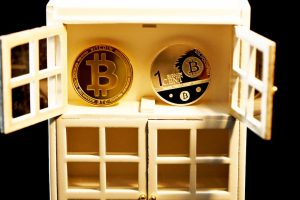Forex Pips vs Points: What’s the Difference and Why it Matters
When it comes to trading in the forex market, understanding the terminology and metrics used is crucial. Two commonly used terms are pips and points, which represent the smallest increments of price movement in currency pairs. While both pips and points are used to measure price changes, they have different definitions and implications in the world of forex trading. In this article, we will explore the difference between forex pips and points and why understanding this difference is important for successful trading.
What are Forex Pips?
A pip, short for “percentage in point,” is the smallest unit of measurement for price movements in the forex market. It represents the fourth decimal place in most currency pairs, except for pairs that involve the Japanese yen, where it represents the second decimal place. For example, if the EUR/USD exchange rate moves from 1.2000 to 1.2001, it is said to have moved by one pip.
Pips are used to calculate the profit or loss of a trade and determine the spread, which is the difference between the bid and ask price. For example, if the spread for EUR/USD is 1 pip, and you enter a long trade at 1.2000, you would need the price to move to at least 1.2001 for the trade to break even. If the price moves to 1.2002, you would have made a profit of 1 pip.
Pips are a standardized unit of measurement that allow traders to easily compare price movements across different currency pairs. They also play a crucial role in determining the position size and risk management of a trade. Traders often use pips to set stop-loss and take-profit levels, as well as to calculate potential profits and losses.
What are Forex Points?
While pips are the standard unit of measurement in the forex market, points are another term used to represent price movements. Points are typically used in futures and indices trading, where the value of one point differs from one instrument to another. Unlike pips, which have a fixed value, points can have different values depending on the instrument being traded.
In futures trading, a point represents a one-unit change in the price of a contract. For example, if the S&P 500 index moves from 3,000 to 3,001, it is said to have moved by one point. Similarly, in the futures market, a point represents a one-tick movement in price.
The value of a point varies depending on the contract size and the instrument being traded. For example, in the E-mini S&P 500 futures contract, a point is equal to $50. So, if the price moves by 10 points, it represents a $500 change in value. In contrast, the value of a point in the Eurodollar futures contract is $25.
Why Does the Difference Matter?
Understanding the difference between pips and points is crucial for accurate price analysis and risk management in forex trading. Using the wrong unit of measurement can lead to incorrect calculations and misinterpretation of price movements.
For example, if a trader mistakenly interprets a 10-point move in the EUR/USD pair as a 10-pip move, they would be misjudging the magnitude of the price change. This could result in setting incorrect stop-loss and take-profit levels, leading to potential losses or missed profit opportunities.
Furthermore, understanding the difference between pips and points allows traders to effectively compare price movements across different markets. For instance, if a trader is monitoring both the forex market and the futures market, they need to be able to differentiate between a 10-pip move in a currency pair and a 10-point move in a futures contract.
Conclusion
In the world of forex trading, pips and points are commonly used terms to measure price movements. While pips represent the smallest increment of price change in most currency pairs, points are used in futures and indices trading, with their value varying across different instruments. Understanding the difference between pips and points is essential for accurate price analysis, risk management, and effective comparison of price movements. Traders should always ensure they are using the correct unit of measurement to avoid any miscalculations or misinterpretations that could impact their trading decisions and outcomes.






